(!) Since support from Microsoft will end on January 14th, 2020, Windows 7 will be excluded from the recommended environment from December 15th, 2019 on this site. Vì lý do Microsoft kết thúc hỗ trợ cho Windows 7 vào ngày 14/01/2020, Windows 7 sẽ là hệ điều hành không được khuyến khích sử dụng với trang web này từ ngày 15/12/2019.
Search by Category / Brand Tìm theo danh mục, nhãn hiệu
Search by Category Tìm theo danh mục
- Scheduled Maintenance Notice: This site will be unavailable due to scheduled maintenance from 8:00 24/11/2024 to 6:00 (ICT) 25/11/2024. We apologize for the inconvenience.
- [Thông báo] Cập nhật địa chỉ kho tập kết hàng hóa tại khu vực miền Nam của MISUMI Việt Nam. Xem chi tiết.
[Announcement] Update on warehouse address in the Southern region of MISUIMI Vietnam. See more. - [Cảnh Báo] Thủ Đoạn Lừa Đảo Từ Nhân Viên Giao Hàng – Yêu Cầu Trả Phí Ship. Xem chi tiết.
[Warning] Fraud Calling from Shipper - Asking to Pay Shipping Fee. See more.
Locating Pins(Insertion Guide Tolerance:0.02/0)
|
Basic Shape
|
|
|---|---|
Brand |
|
| CAD |
|
| Days to Ship |
|
1 itemsMặt hàng
- Sort By
-
You can add up to 6 items per a category to the compare list.

MISUMI
"The pin body is secured by the bolts. Can be used even on portions where the tapped screws cannot be used, because the bolt can be tightened from the top of the insertion guide."
- Volume Discount
Basic Shape Insertion Guide Tip Shape Insertion Guide Tip Type Insertion Guide Specifications Mounting Side Shape Surface Treatment Heat Treatment Material Insertion Guide Outer Dia. D1(mm) Insertion Guide Tolerance Mounting Side Outer Dia. d(mm) Mounting Side Tolerance Screw Mounted Round Flat With Screw Mount Hole Straight (Press-Fit) Not Provided / Hard Chrome Plating Not Provided / Directly Quenching Steel / Stainless Steel - 0.02/0 6 ~ 25 g6 From: 106,972 VND Days to Ship: Số ngày giao hàng: 2 Day(s) or more  2 Day(s) or more
2 Day(s) or more
| BrandNhãn hiệu |
|---|
| Product SeriesDòng sản phẩm |
| CADCAD |
| From |
| Days to ShipSố ngày giao hàng |
| Basic Shape |
| Insertion Guide Tip Shape |
| Insertion Guide Tip Type |
| Insertion Guide Specifications |
| Mounting Side Shape |
| Surface Treatment |
| Heat Treatment |
| Material |
| Insertion Guide Outer Dia. D1(mm) |
| Insertion Guide Tolerance |
| Mounting Side Outer Dia. d(mm) |
| Mounting Side Tolerance |
You can add up to 6 items per a category to the compare list. | |
| BrandNhãn hiệu | MISUMI |
| Product SeriesDòng sản phẩm | |
| CADCAD |
|
| From | 106,972 VND |
| Days to ShipSố ngày giao hàng | 2 Day(s) or more |
| Basic Shape | Screw Mounted |
| Insertion Guide Tip Shape | Round |
| Insertion Guide Tip Type | Flat |
| Insertion Guide Specifications | With Screw Mount Hole |
| Mounting Side Shape | Straight (Press-Fit) |
| Surface Treatment | Not Provided / Hard Chrome Plating |
| Heat Treatment | Not Provided / Directly Quenching |
| Material | Steel / Stainless Steel |
| Insertion Guide Outer Dia. D1(mm) | - |
| Insertion Guide Tolerance | 0.02/0 |
| Mounting Side Outer Dia. d(mm) | 6 ~ 25 |
| Mounting Side Tolerance | g6 |
Loading...Tải…
ConfigureTạo
Specification/DimensionsĐặc điểm kỹ thuật / Kích thướcĐặc điểm kỹ thuật / Kích thước
-
Insertion Guide Tip Shape
-
 Round
Round -
 Diamond
Diamond -
 Square Head
Square Head -
 Triangle
Triangle
-
-
Insertion Guide Tip Type
-
 Tapered
Tapered -
 Round Tapered
Round Tapered -
 Taper R
Taper R -
 R
R -
 Spherical
Spherical -
 Flat
Flat -
 Ball End
Ball End -
 Bullet Nose
Bullet Nose
-
-
Insertion Guide Specifications
-
 Not Provided
Not Provided -
 With Screw Mount Hole
With Screw Mount Hole -
 With Hex Socket
With Hex Socket -
 With Flathead Slot
With Flathead Slot -
 Tapped
Tapped
-
-
Mounting Side Shape
-
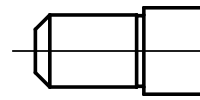 Straight (Press-Fit)
Straight (Press-Fit) -
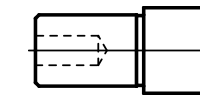 Tapped
Tapped -
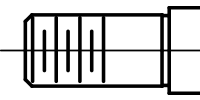 Threaded
Threaded -
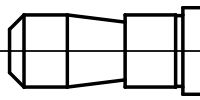 Circumference Groove
Circumference Groove -
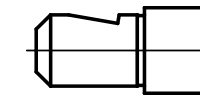 Notch
Notch -
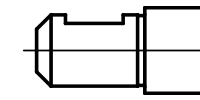 Set Screw Flat
Set Screw Flat
-
-
Surface Treatment
- Not Provided
- Black Oxide
- Electroless Nickel Plating
- Hard Chrome Plating
- Buffed
- Hard Chrome Plating + Buffed
- Anodize
- Polishing
- Isonite Treatment
-
Heat Treatment
- Not Provided
- Carburized
- Directly Quenching
- Surface Ionitrided
-
Material
- Steel
- Stainless Steel
- Resin
- Aluminum
-
Insertion Guide Outer Dia. D1(mm)
-
Insertion Guide Tolerance
-
Mounting Side Outer Dia. d(mm)
- 1
- 2
- 3
- 4
- 5
- 6
- 6S
- 6T
- 7
- 8
- 8S
- 8T
- 10
- 10S
- 10T
- 12
- 12S
- 12T
- 13
- 13T
- 13.9
- 14
- 15
- 15.9
- 16
- 16S
- 16T
- 18
- 19
- 19.9
- 20
- 20T
- 22
- 24
- 25
- 30
- 32
- 38
- 39
- 40
- 50
- 56
-
Mounting Side Tolerance
Related Categories to Locating PinsDanh mục liên quan đến Locating Pins
FAQ Locating Pins
- Question: What are locating pins?
- Answer: Locating pins are essential components used in factory automation to achieve precise alignment and positioning of workpieces during assembly and machining processes. These pins are inserted into precision holes or bushings to establish accurate alignment and prevent movement or misalignment of parts.
- Question: What are the main benefits of using locating pins?
- Answer: The use of locating pins offers several benefits in factory automation. They ensure accurate and repeatable positioning, improving the overall quality and consistency of assembled products. Locating pins also enhance productivity by reducing assembly time and minimizing errors. They provide stability and prevent movement or shifting of components, resulting in better alignment and fit. Additionally, locating pins help to maintain proper tolerances and ensure efficient machining processes.
- Question: What are the different types of locating pins?
- Answer: There are various types of locating pins, including dowel locating pins and conical locating pins. Dowel locating pins have a cylindrical shape and are commonly used for precise alignment in fixtures. Conical locating pins feature a tapered design, allowing for self-centering and enhanced stability.
- Question: What materials are locating pins made from?
- Answer: Locating pins are typically made from durable and corrosion-resistant materials such as hardened steel, stainless steel, or tungsten carbide. The choice of material depends on the specific application requirements, including load capacity, environmental conditions, and desired longevity.
- Question: How do I install and use locating pins effectively?
- Answer: To install locating pins, align the pin with the pre-drilled hole or bushing and gently insert it until it is securely in place. Ensure that the pin fits snugly and does not protrude excessively. When using locating pins, it is essential to follow the design specifications and guidelines provided by the manufacturer. Proper maintenance, including periodic cleaning and lubrication, can also help ensure optimal performance and longevity of locating pins.





















































How can we improve?
How can we improve?
While we are not able to respond directly to comments submitted in this form, the information will be reviewed for future improvement.
Customer Privacy Policy
Thank you for your cooperation.
While we are not able to respond directly to comments submitted in this form, the information will be reviewed for future improvement.
Please use the inquiry form.
Customer Privacy Policy